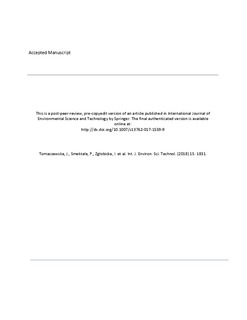| dc.description.abstract | Due to its harmful impact on human health, the presence of heavy metals, metalloids and other toxic pollutants in drinking or irrigation water is a major concern. Recent studies have proved that nanosized adsorbents are significantly more effective than their microsized counterparts. Particular attention has been given to nanocomposites with nanoadsorbents embedded in matrixes that could provide stability to the material and contribute to eliminating problems that may appear when using conventional granular systems. This study presents the preparation of a novel hybrid filter from a commercially available polypropylene (PP) non-woven fabric matrix modified with multiwall carbon nanotubes (MWCNT) and iron oxy(hydroxide) nanoparticles, and its use in the removal of As(III). A Box–Behnken statistical experimental design has been chosen to explore relevant variables affecting the filter performance: (1) As(III) concentration, (2) pH and (3) sorbent dose. From an As(III) concentration of 10 mg L−1, at pH 6.5 and with a sorbent dose of 5 g L−1, the PP filter modified with MWCNT removes 10% of the initial metalloid concentration, reaching a capacity of 0.27 mg g−1. After modification with iron oxy(hydroxide), the performance of the material is largely enhanced. The filter, under the same conditions, removes 90% of the initial As(III) concentration, reaching a capacity almost tenfold higher (2.54 mg g−1). This work demonstrates that the developed hybrid filter is effective toward the removal of As(III) in a wide range of pHs. A cubic regression model to compute the removal of the filter as a function of pH and sorbent dose is provided. | nb_NO |
